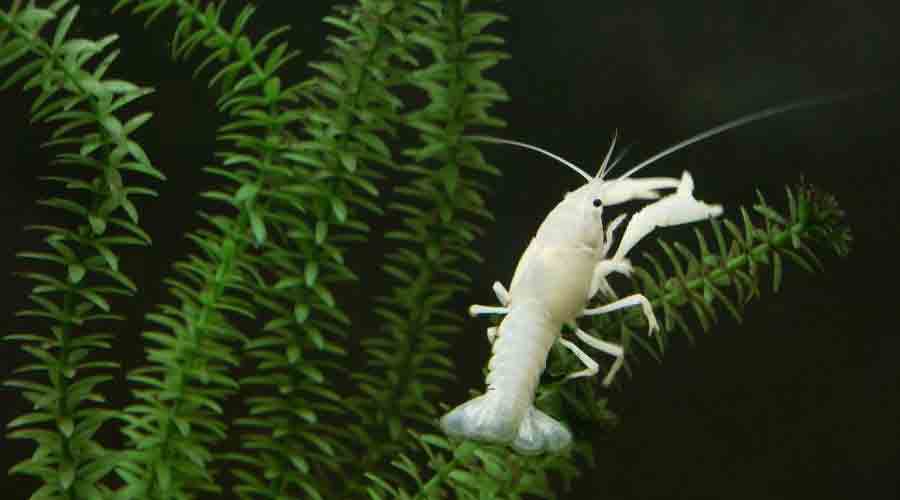In this blog, I’m going to give you a few pet crayfish tips for getting started, and beyond—things that I’ve learned over several years of owning a blue crayfish.
Let’s jump in.
Pet Crayfish Tips: Getting Started
When I first decided to get a pet crayfish, my brilliant colored, electric blue crayfish, I thought I just needed a fish tank, a little water, some gravel, my crayfish, and a few tank ornaments. Then I thought I could just add a few fish here and there and things would be great. However, it doesn’t quite work like that.
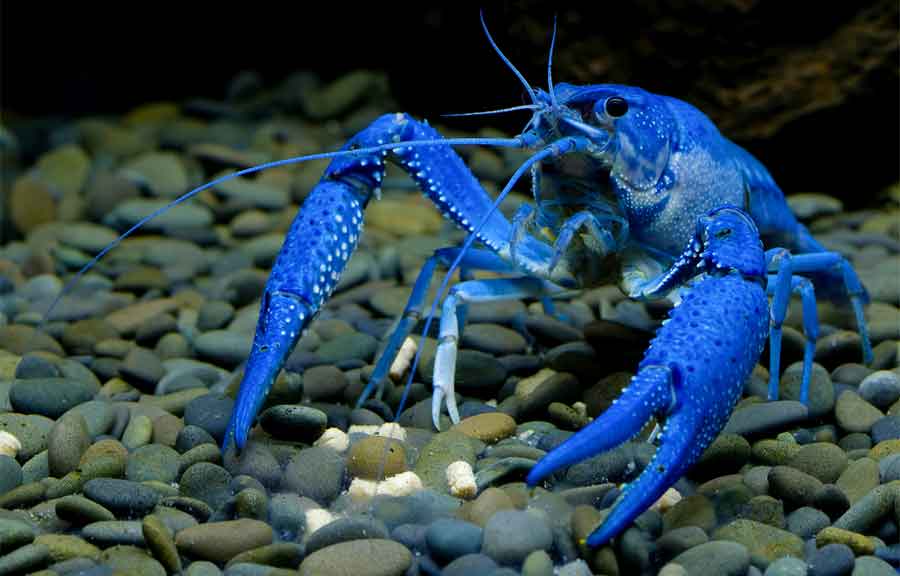
Now, let me be clear, it’s not like a second job owning a crayfish as a pet, but there are some things you need to know in order for your crayfish-keeping experience to be a success.
1. Fish Tank Size
I’ve written about this topic in other blogs on my crayfish site and talk about it when giving pet crayfish tips to other people. And, the reason is that it’s important.
Crayfish are omnivores. They love to eat and with that comes a lot of waste. So one of the reasons you want to have a 10 or 20-gallon fish tank is so that the water doesn’t get so dirty so quickly. Personally, I would say you want a tank no smaller than a 20-gallon aquarium for crayfish.
Also, you need to need a big enough size aquarium so that these guys have enough room to roam about.
Pro tip: Before you get started with your crayfish, be sure to cycle your tank.
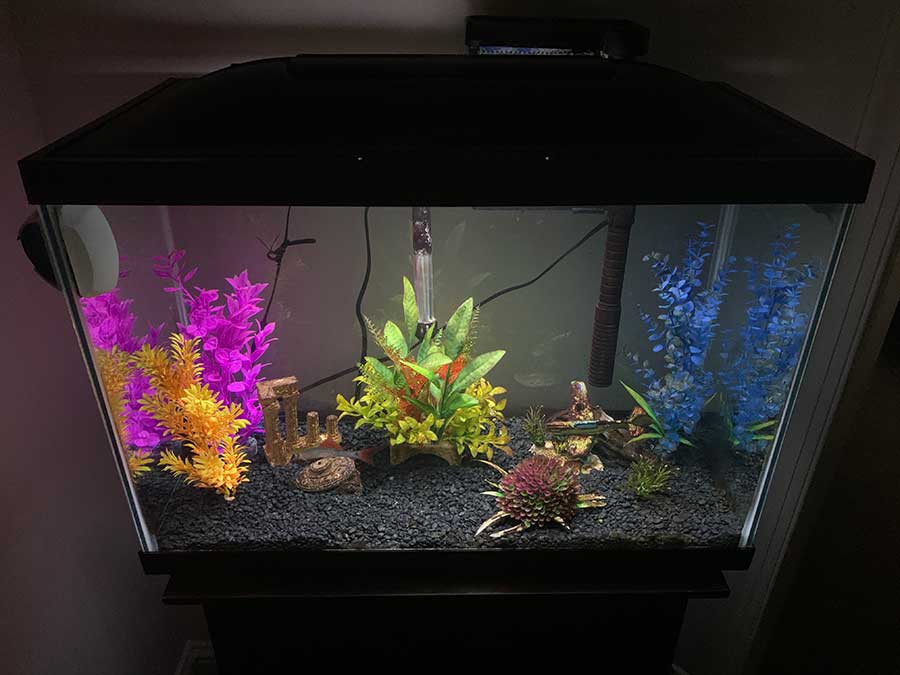
2. Cleaning the Tank of Your Pet Crayfish
As I mentioned above, crayfish are dirty and put out a lot of waste. So, you’ll need to clean the tank regularly. If you have other fish in your tank with your crayfish (more on this later), you’ll definitely need to stay on top of cleaning your tank and doing water changes.
Do not wait until your tank is cloudy, green, and slimy before doing a water change. Do them frequently.
With pet crayfish, I suggest doing a 20% water change at least every two weeks. But, keep your eye on the tank. If you notice it’s a little dirtier than it should be before the usual cleaning time, then go ahead and do a water change.
3. Pet Crayfish Tips: Other Fish as Tank Mates
With a pet crayfish, you can only keep certain freshwater fish as tank mates. As I said, crayfish are omnivores—aggressive little scavengers who in the wild eat live and dead fish, plants, insects, and anything they can get to. This means that in your tank, they will eat your other fish if given the chance to do so. So, make sure if you get any tank mates for your crayfish, that a) you have a big enough tank and b) you get the right kind of fish.
If you have one crayfish and a 50-gallon tank, then a few fish can work, if you get the right fish. And just remember the rule, one gallon of water to every inch of fish.
So what are the right types of freshwater fish to keep with your crayfish? Well, there is a huge number of really cool freshwater fish that can work well in aquariums with crayfish. You’ll want fish that swim from mid-level to the top of your tank. You’ll want fish that are fast swimmers, and even fish that can be a little aggressive themselves. Never get slow-moving fish or fish that swim on the bottom of the tank. They can become dinner for your pet crayfish really fast.
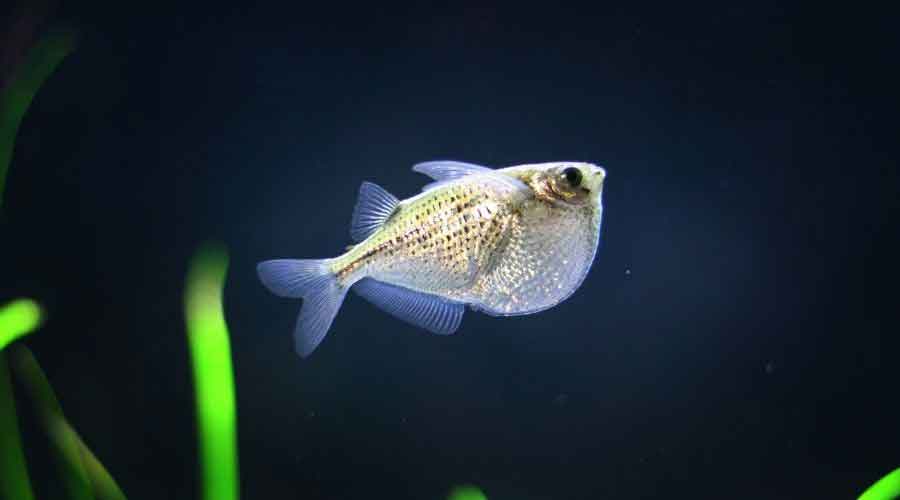
Fish that can work well as tank makes with crayfish:
- Danios
- Barbs
- Redtail sharks
- Rosy red minnows
- Tetras
- Hatchetfish
4. Hideouts for Your Pet Crayfish
One characteristic of crayfish that is common, is that they like to burrow and hideout. I mean, they also like to roam about as I mentioned above and as you will see if you have one as a pet. But, they do like to hide out under rocks and in hideouts.
Hideouts are also important for crayfish when they molt. When a crayfish molts, it becomes soft and vulnerable to other aquatic life. It’s new shell needs time to get stronger. So during the time while a new shell is growing, it’s a good idea to provide your crayfish with a hideout. These can be purchased at any pet store or online or by simply placing a piece of PVC pipe into your tank.
Pro tip: Never remove the old crayfish exoskeleton from the tank after molting. Crayfish eat this exoskeleton and it helps strengthen their new exoskeleton.
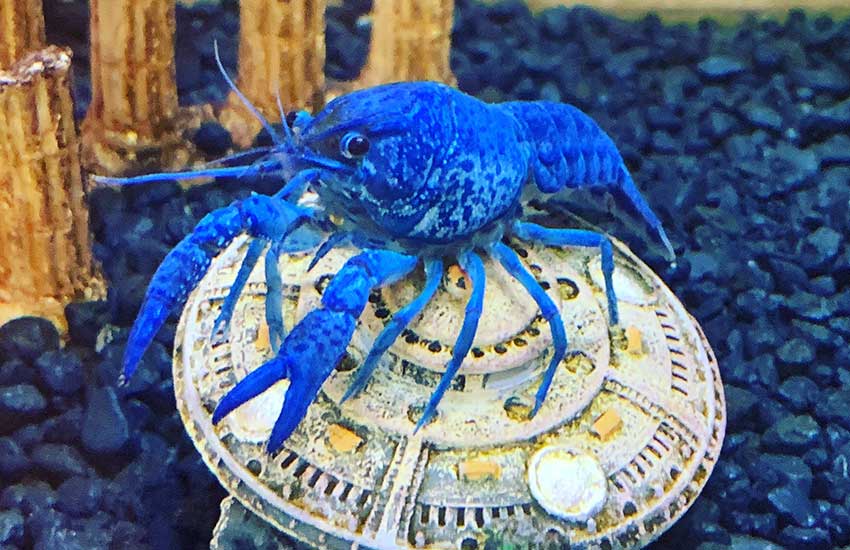
5. Feeding
Feeding crayfish is pretty simple. I mean, after all, these guys are omnivores and eat pretty much anything. As a pet, you can feed them sinking algae wafers, fish flakes, fresh zucchini, peas, spinach, etc. However, make sure you do not overfeed your crayfish or other fish for that matter. This only makes your tank dirtier as food that is not eaten rots in the tank.
6. Careful with Two Crayfish
I learned this one the hard way—about keeping two pet crayfish together. In a 10-gallon or 20-gallon tank, this is not something you want to do. And, you definitely don’t want to keep crayfish of different species together. The only exception to this rule is when it comes to the Mexican dwarf crayfish. These guys are not only smaller than other pet crayfish such as blue crayfish and white crayfish, but they also have better temperaments and can work well in community tanks.
Recap: Pet Crayfish Tips
In this blog, I talked in detail about some pet crayfish tips for beginners and crayfish keepers. Rules that should be followed in order to keep your crayfish healthy and happy.
Always consider tank size before getting your crayfish. They need to roam about and the water won’t get so dirty so fast with a bigger tank. Also, be sure to clean the tank regularly. I personally suggest 20% water changes every two weeks.
If you are going to get other fish to keep with your pet crayfish, consider getting fish that swim near the middle of the tank or the top of the tank. Fish that are slow-moving or swim on the bottom of the tank will not do well. Danios, tetras, hatchet fish, and red tail sharks are a few fish that can work well with a crayfish in the right size tank.
Also, remember to keep a hideout in the fish tank for your crayfish. This is important as crayfish like to burrow and especially important for protection during molting.
And, when it comes to feeding, crayfish can live happy healthy lives eating sinking algae pellets, peas, zucchini, and spinach. However, just make sure you never overfeed your crayfish. And finally, as a general rule, don’t keep two crayfish together.

